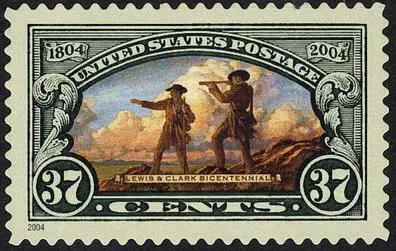Going Home
After a long and horrible winter at Clatsop, the Lewis and Clark expedition gathered everything that they would need and began their return trek home on March 23, 1806. When they arrived at the Nez Perce Native Indian tribe land, they were able to get their horses.
They waited there until June when all of the last snows were melted so that they could cross the mountains and enter the Missouri River Basin.
- Lewis, Clark, and the entire expedition dreaded crossing the harsh Bitterroot Mountain Range that the Nez Perce had shown them. In their journals, they listed this as one of the worst mountains they had ever seen or experienced.
- Lewis took one group and traveled north to the Missouri River Great Falls and then explored one of the River’s tributaries called the Marias River in what is known today as Montana. Clark took another group including Sacagawea and the child that she had on the trip, and they headed along the Yellowstone River south. Their plan was to meet in North Dakota, where the Missouri and Yellowstone met.
- As Clark’s group traveled, they came upon a large rock formation at Yellowstone River. Clark had nicknamed Sacagawea’s son “Pompey,” and he named the rock “Pompey’s Pillar.” Clark carved his name and the date on the rock, and this rock is now a national monument.
- The entire trip, the expedition had maintained a do-no-harm philosophy towards the Native Indians, with the exception of being forced to steal a canoe. This changed when Lewis left the area of Pompey’s Pillar. When they arrived at what is known today as Cut Bank, Montana at Marias River, they came across eight warriors of the Blackfeet Indian tribe. The warriors tried to steal their horses and weapons, and Lewis and his men were forced to kill two of the warriors. This confrontation was known as Two Medicine Fight Site and was the only moment of violence on the expedition.
- The two groups led by both Lewis and Clark met up on August 12, and they then left Sacagawea and her family with the Mandan tribe. Now they could take the Missouri River with the current flowing in a direction that made their trip go faster, and they arrived in St. Louis on September 23. Their arrival was greeted warmly with lots of celebrations, and Lewis and Clark were considered to be heroes.
- In the fall of 1806, Lewis and Clark came back to Washington, D.C., and told President Jefferson all about their expedition. Although they never found the Northwest Passage that Jefferson had looked for, they had accomplished a near-impossible journey through the Louisiana Territory with little in the way of violence and only one death.
- The total miles that the Corps had journeyed was over 8,000 miles, and the legacy that they created included an incredible volume of geographical information and maps, identifying over 120 animal species and more than 200 botanical samples. The group had introduced themselves to dozens of Native Indian tribes and established peaceful relations with almost all of them.
- Lewis and Clark were rewarded for their hard work with double pay. They also got 1,600 acres of land. Lewis was given the title of the Louisiana Territory Governor, and Clark had the title of Louisiana Territory Brigadier General of the Militia as well as being the federal Indian Agent. Clark took care of Sacagawea’s children when she died.
The Lewis and Clark expedition is one of the most incredible in the history of the United States. It not only mapped out the new territory but assisted as inspiration for many other explorers that came after them.
Their philosophy was also a great base for trying to maintain good relations with the Native Indians.

200th Anniversary issue U.S. postage stamp commemorating the 200th anniversary of the Expedition



